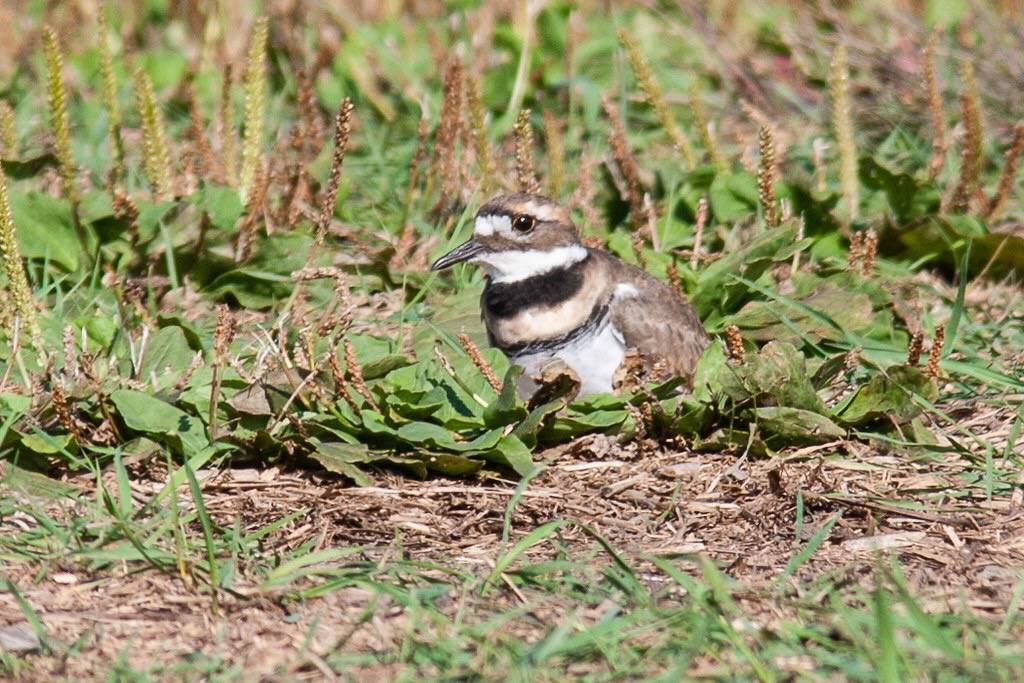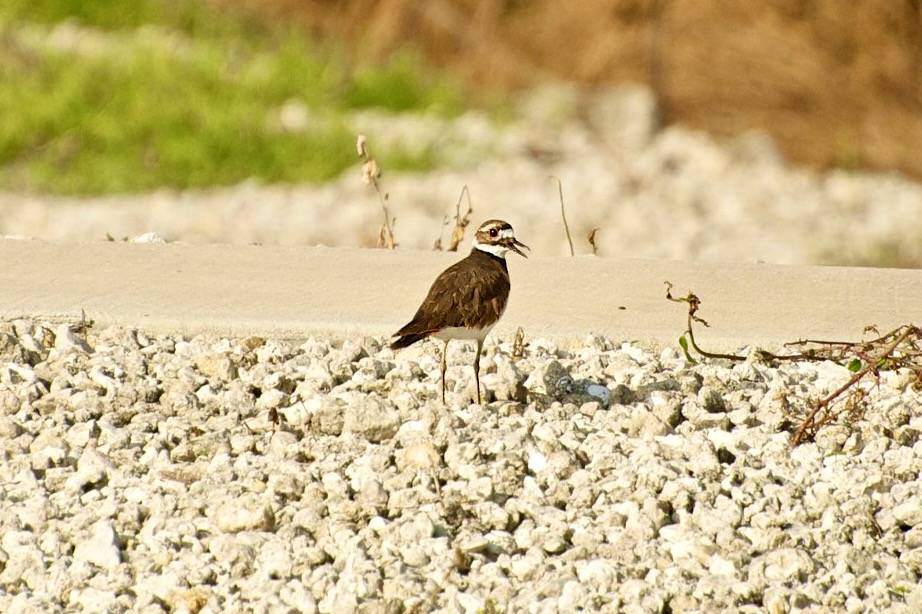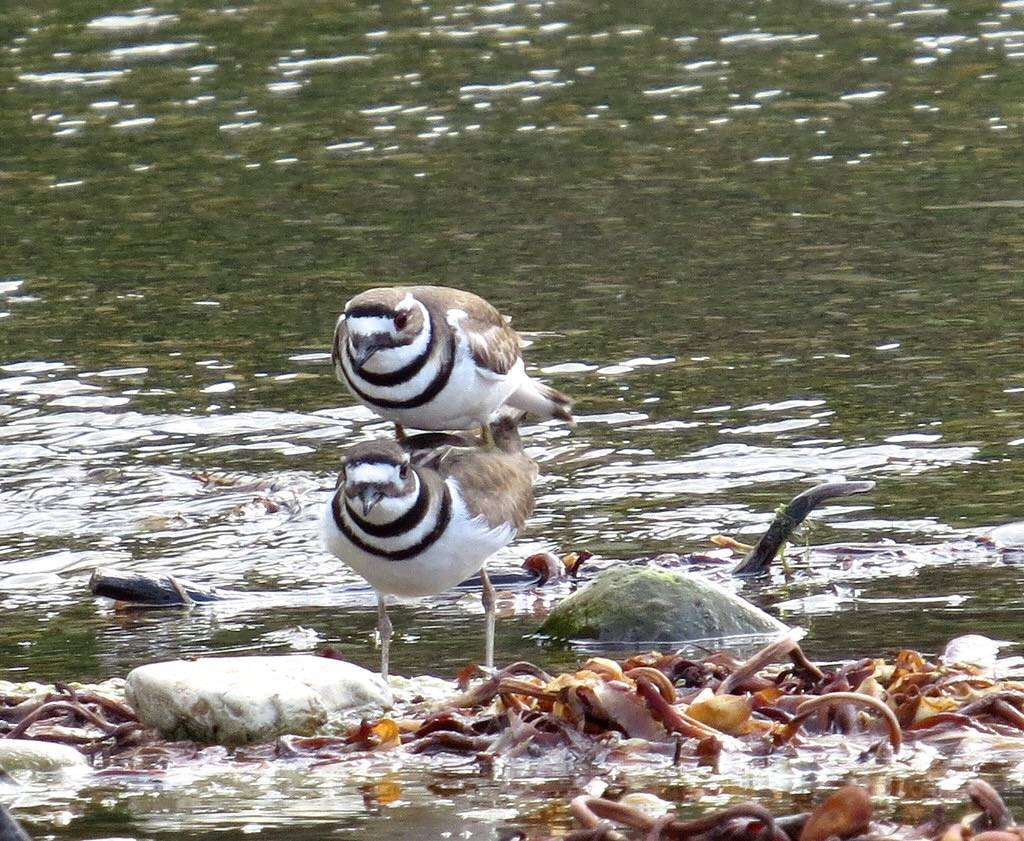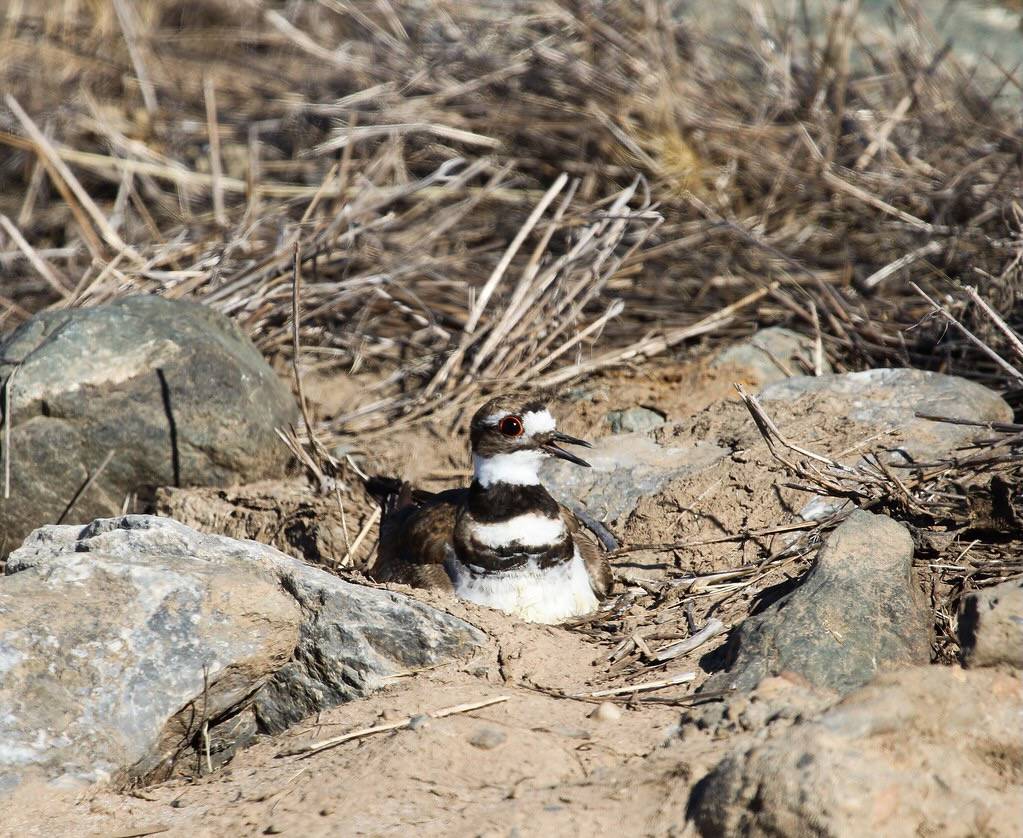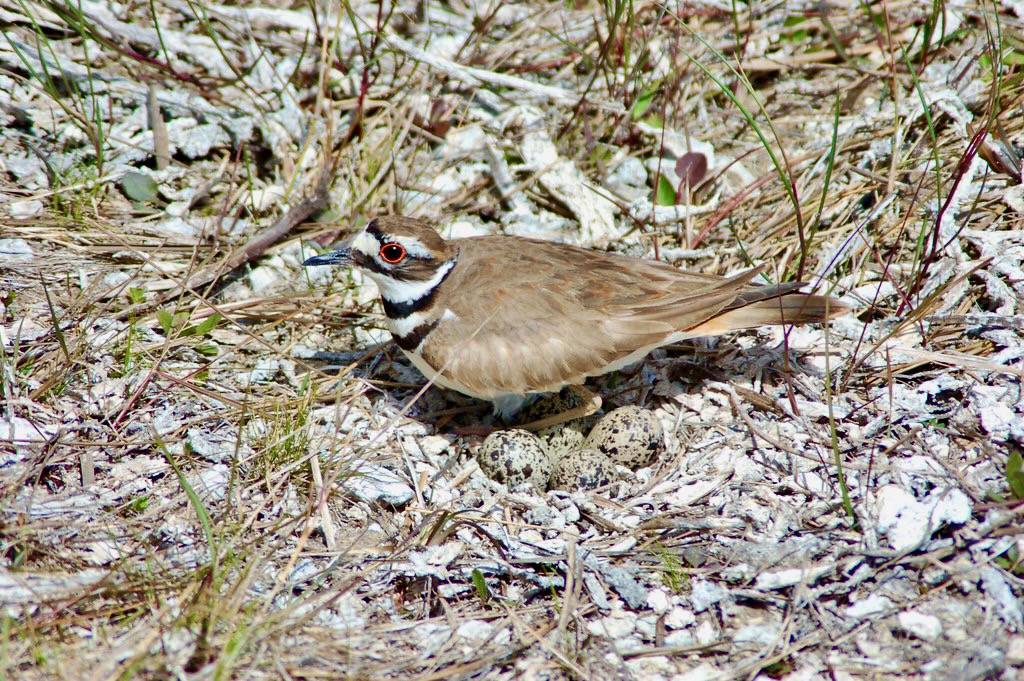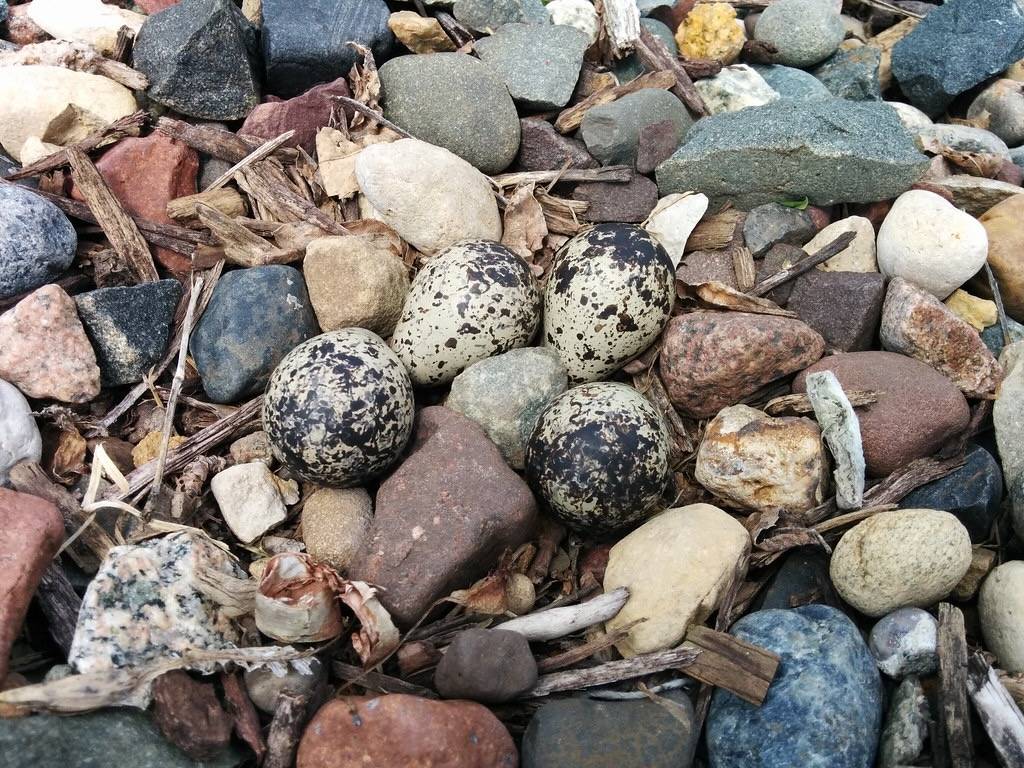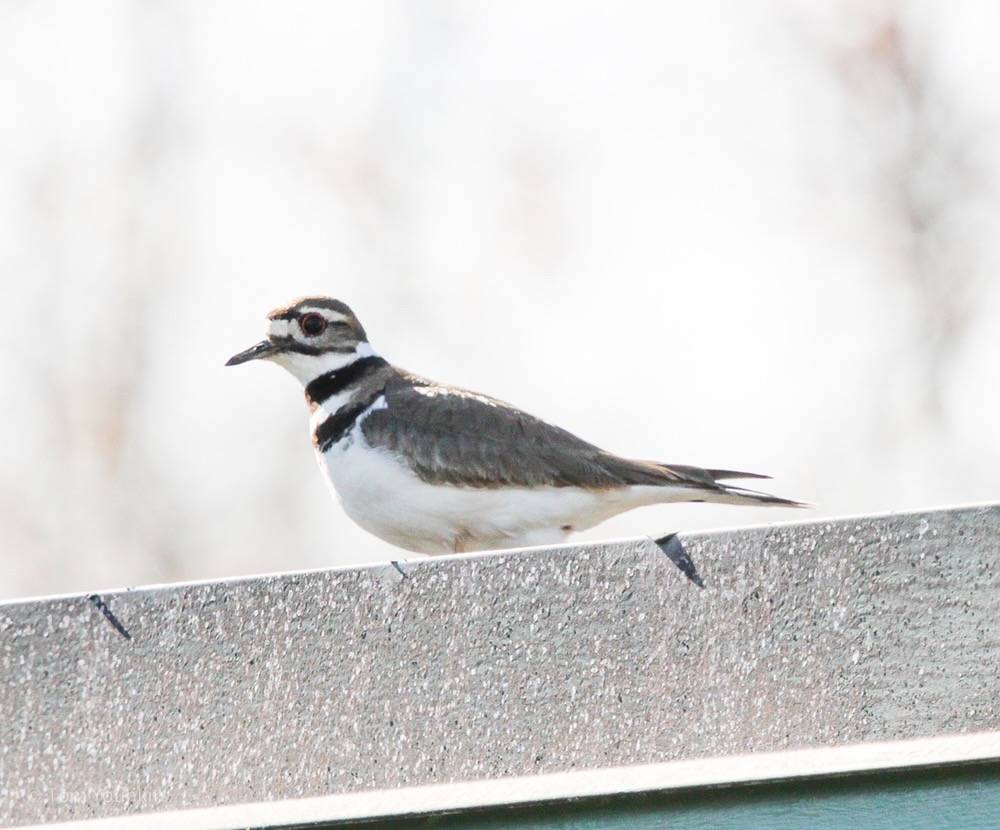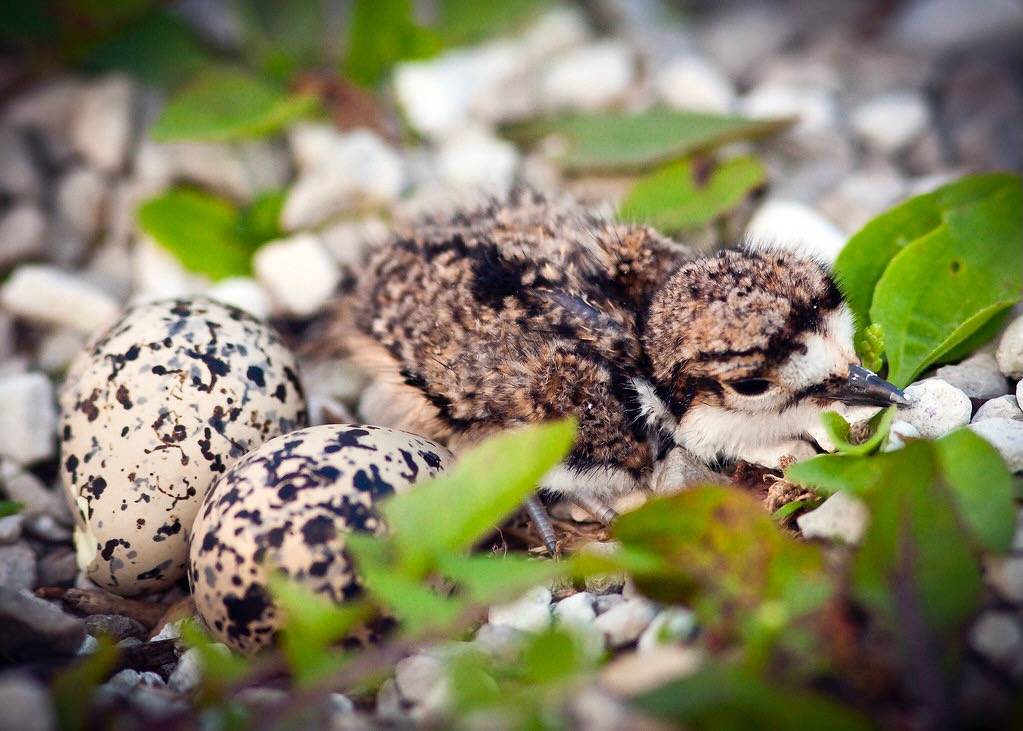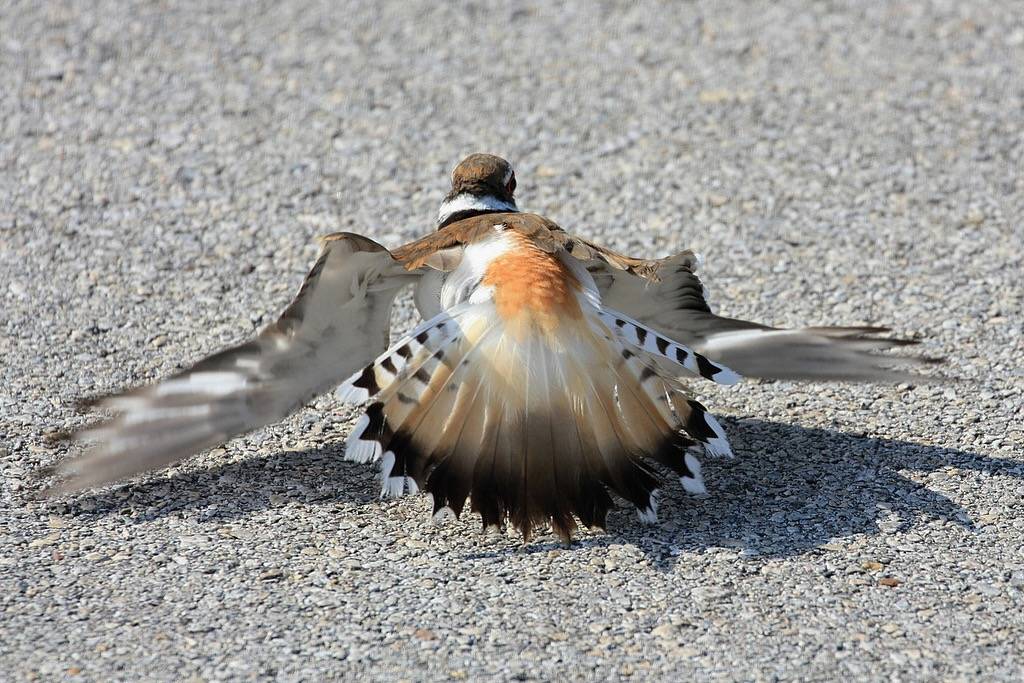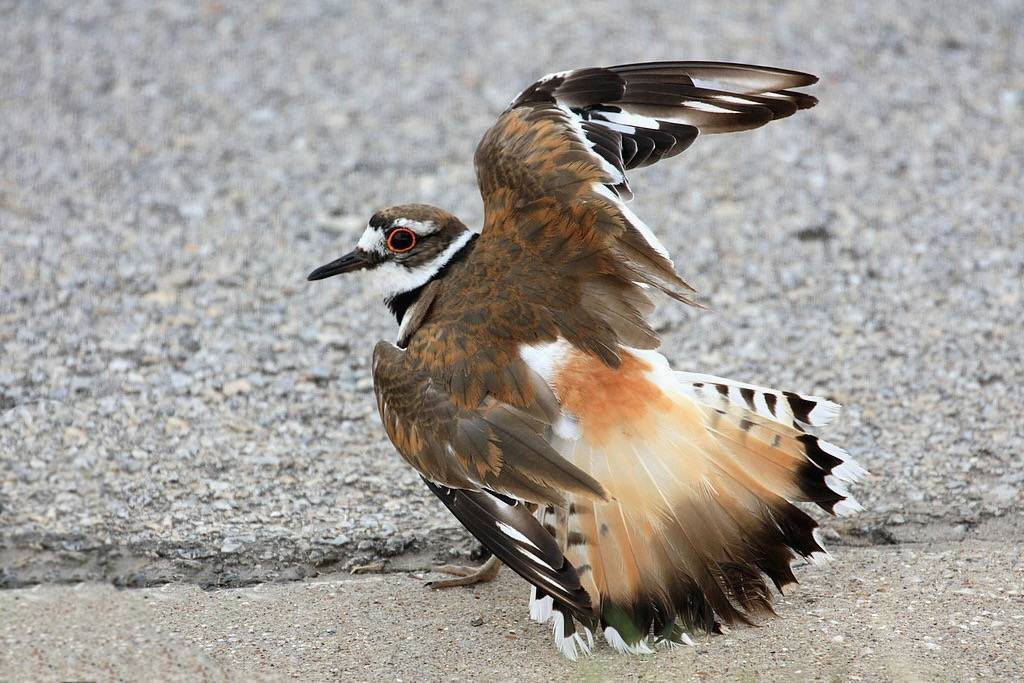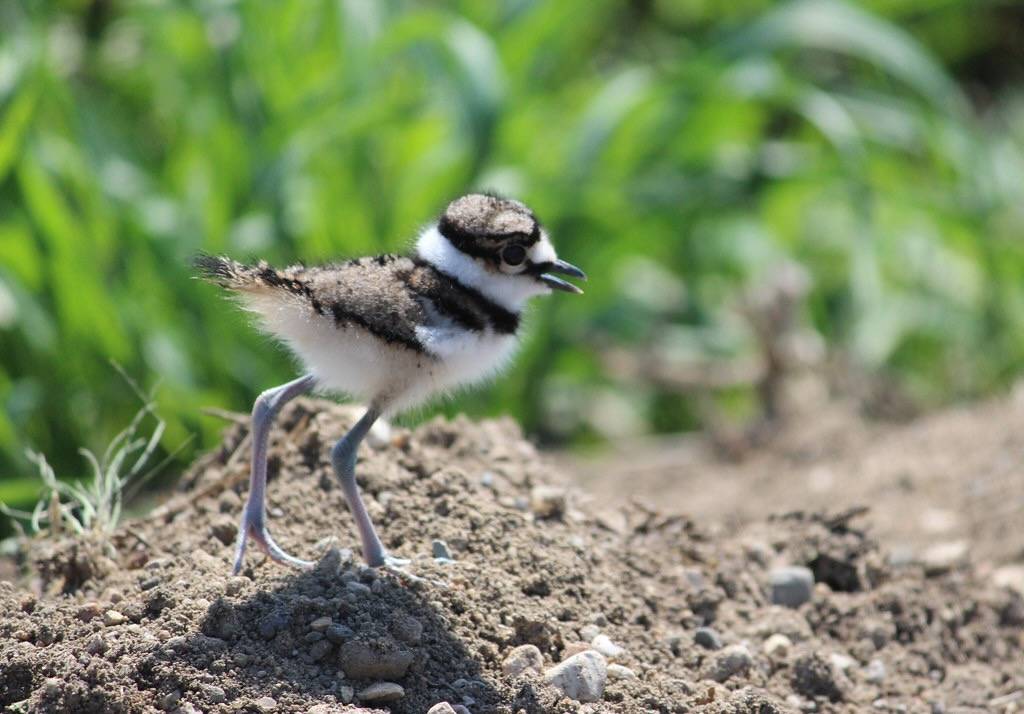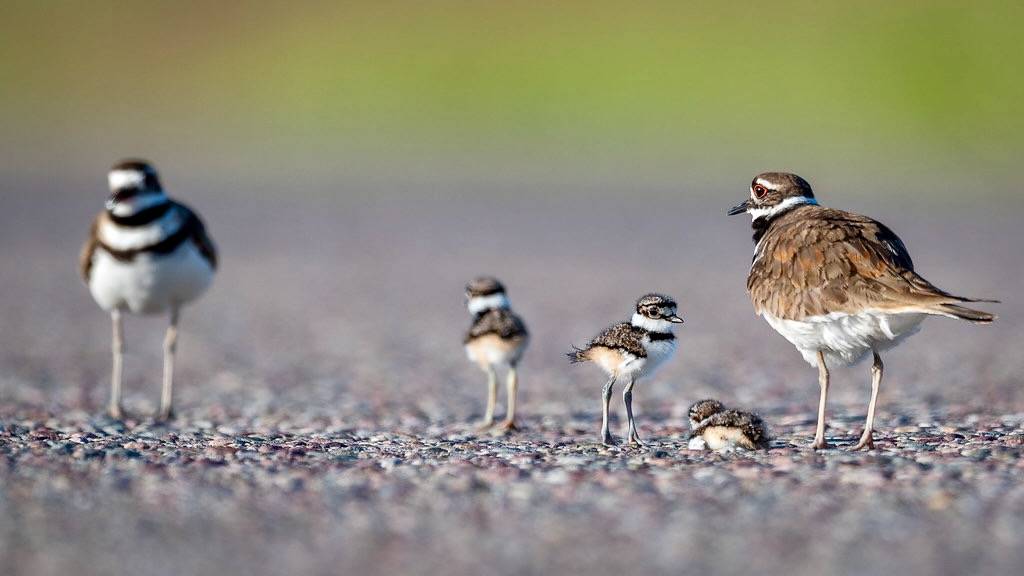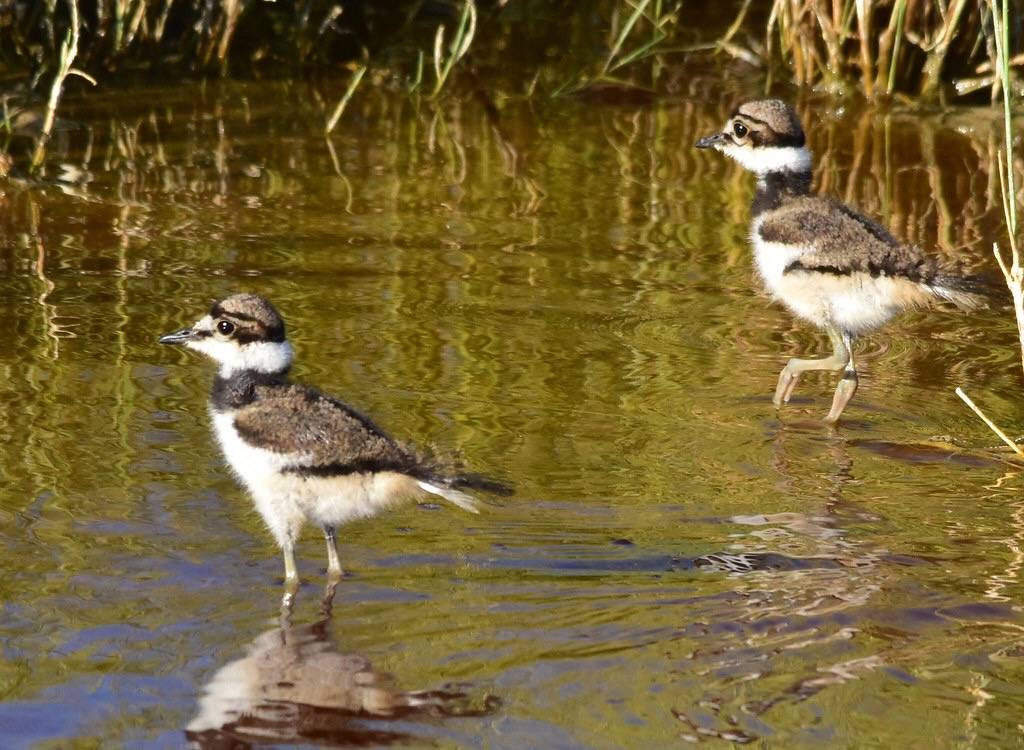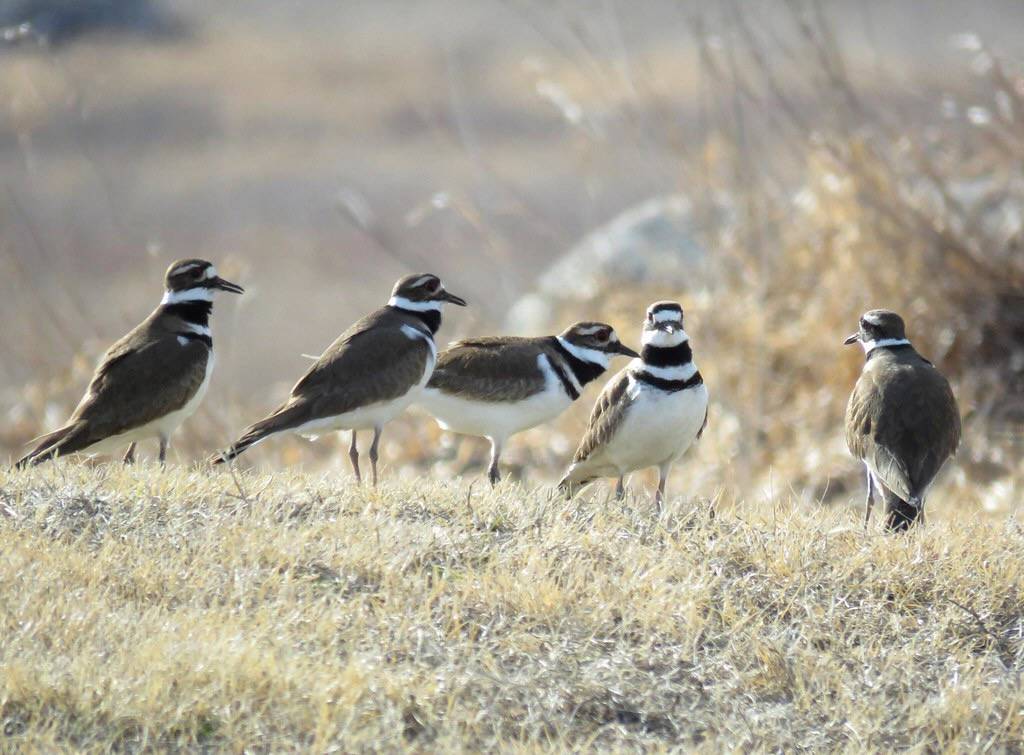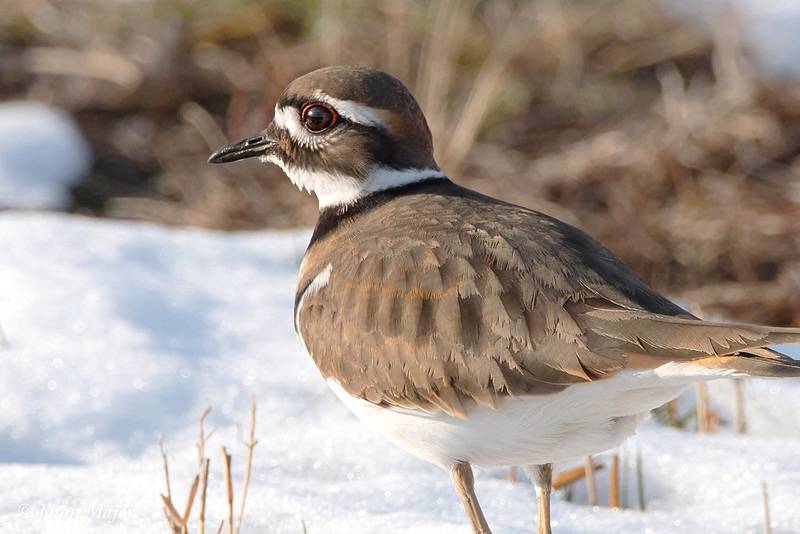Killdeer
The Killdeer is another rare visitor to Salter Grove that is quite abundant elsewhere. Available records from 2002 to 2022 indicate that it has only been seen four times in the park. Unlike other shorebirds, the primarily insectivorous Killdeer is more often found on dry grassy ground far from the beach.
It is surprisingly hard to spot a Killdeer despite its warm brown coloration and the conspicuous black bands on its head and breast. It draws more attention with its piercing namesake call "kill-deeer." Even its species name vociferus refers to its many strident calls.
It is noticeable when it runs across open ground to startle prey. It would stop suddenly, bob its head up and down, look around, and dashes onwards if no insect or earthworm presents itself. It springs into action when an intruder approaches the nest. Distressing calls combine with erratic movements suggest the attending parent has a broken wing. What a surprise when the crippled bird flies away--once the intruder is away from the nest!
Because any flat expansive area with short vegetation would be acceptable as a nesting habitat for the Killdeer, its abundance has increased with the expansion of human-modified habitats. It is often found in grassy areas near airports, athletic fields, golf courses, grazed or plowed fields, suburban lawns, and parking lots. It is even known to nest on the flat rooftops of buildings.
The breeding range of the Killdeer extends from southern Canada to northern Mexico. Northern populations migrate as far south as northern South America for the winter months but populations that breed in warmer areas are resident year round.

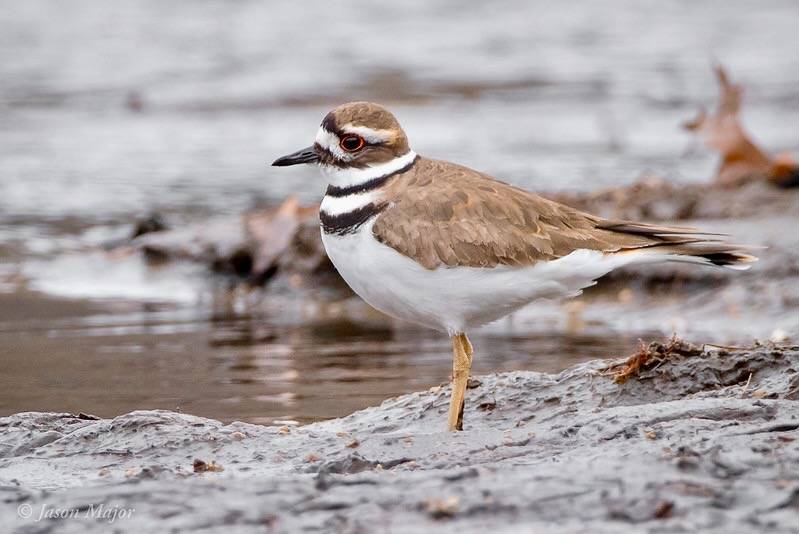

![Playero Gritón [Killdeer] (Charadrius vociferus) by barloventomagico is licensed under CC BY-NC-ND 2.0.](/_files/public/Bird Galleries/Killdeer/03 Killdeer wading in water 23dec09.jpeg?w=350?blur=10)
